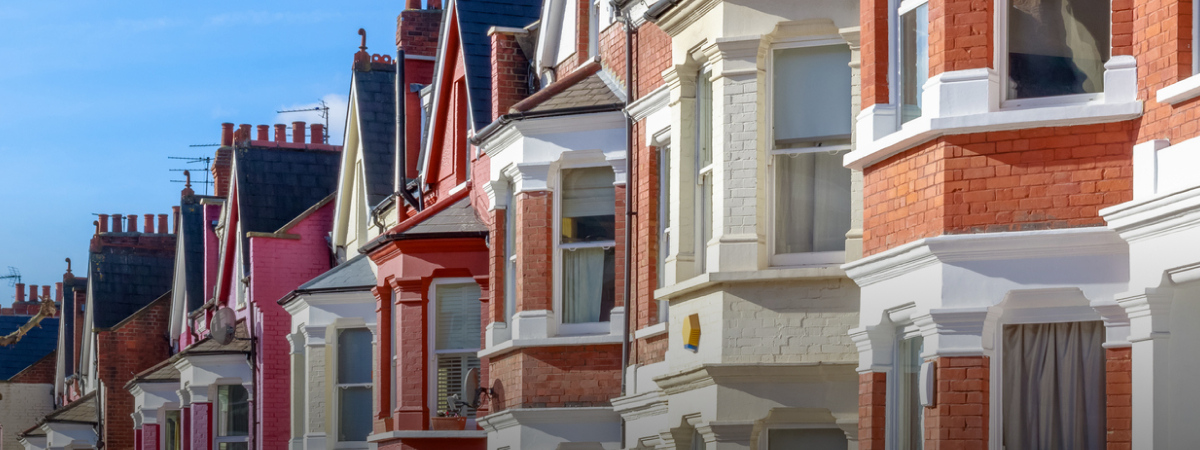
A quick guide to VAT (Value Added Tax) in the UK
Ruggero Galtarossa

Send from
Popular
 EUR
Germany
EUR
Germany
 EUR
Lithuania
EUR
Lithuania
 PLN
Poland
PLN
Poland
 EUR
Poland
EUR
Poland
 RON
Romania
RON
Romania
 EUR
Romania
EUR
Romania
 GBP
United Kingdom
GBP
United Kingdom
 EUR
United Kingdom
EUR
United Kingdom
 USD
United Kingdom
USD
United Kingdom
 USD
Lithuania
USD
Lithuania
 USD
Poland
USD
Poland
 USD
Romania
USD
Romania
All countries
 EUR
Austria
EUR
Austria
 EUR
Belgium
EUR
Belgium
 EUR
Croatia
EUR
Croatia
 EUR
Cyprus
EUR
Cyprus
 CZK
Czech Republic
CZK
Czech Republic
 EUR
Czech Republic
EUR
Czech Republic
 DKK
Denmark
DKK
Denmark
 EUR
Denmark
EUR
Denmark
 EUR
Estonia
EUR
Estonia
 EUR
Finland
EUR
Finland
 EUR
France
EUR
France
 EUR
Germany
EUR
Germany
 EUR
Greece
EUR
Greece
 HUF
Hungary
HUF
Hungary
 EUR
Hungary
EUR
Hungary
 ISK
Iceland
ISK
Iceland
 EUR
Iceland
EUR
Iceland
 EUR
Ireland
EUR
Ireland
 EUR
Italy
EUR
Italy
 EUR
Latvia
EUR
Latvia
 EUR
Liechtenstein
EUR
Liechtenstein
 EUR
Lithuania
EUR
Lithuania
 EUR
Luxembourg
EUR
Luxembourg
 EUR
Malta
EUR
Malta
 EUR
Monaco
EUR
Monaco
 EUR
Netherlands
EUR
Netherlands
 NOK
Norway
NOK
Norway
 EUR
Norway
EUR
Norway
 PLN
Poland
PLN
Poland
 EUR
Poland
EUR
Poland
 EUR
Portugal
EUR
Portugal
 RON
Romania
RON
Romania
 EUR
Romania
EUR
Romania
 EUR
San Marino
EUR
San Marino
 EUR
Slovakia
EUR
Slovakia
 EUR
Slovenia
EUR
Slovenia
 EUR
Spain
EUR
Spain
 SEK
Sweden
SEK
Sweden
 EUR
Sweden
EUR
Sweden
 EUR
Switzerland
EUR
Switzerland
 GBP
United Kingdom
GBP
United Kingdom
 EUR
United Kingdom
EUR
United Kingdom
 TRY
Turkey
TRY
Turkey
 EUR
Bulgaria
EUR
Bulgaria
 EUR
Albania
EUR
Albania
 EUR
Moldova
EUR
Moldova
 EUR
Montenegro
EUR
Montenegro
 EUR
Macedonia
EUR
Macedonia
Exchange Rate
– – –
GBP 1 = NGN 2030.28232
Transfer Fee
Free – – – 0.99 0.99 USD
Receiver gets
Popular
 EUR
Germany
EUR
Germany
 EUR
Lithuania
EUR
Lithuania
 PLN
Poland
PLN
Poland
 EUR
Poland
EUR
Poland
 RON
Romania
RON
Romania
 EUR
Romania
EUR
Romania
 GBP
United Kingdom
GBP
United Kingdom
 EUR
United Kingdom
EUR
United Kingdom
 USD
United Kingdom
USD
United Kingdom
 USD
Lithuania
USD
Lithuania
 USD
Poland
USD
Poland
 USD
Romania
USD
Romania
All countries
 EUR
Andorra
EUR
Andorra
 AED
United Arab Emirates
AED
United Arab Emirates
 USD
United Arab Emirates
USD
United Arab Emirates
 XCD
Anguilla
XCD
Anguilla
 ALL
Albania
ALL
Albania
 EUR
Albania
EUR
Albania
 AMD
Armenia
AMD
Armenia
 EUR
Armenia
EUR
Armenia
 USD
Armenia
USD
Armenia
 AOA
Angola
AOA
Angola
 EUR
Austria
EUR
Austria
 AUD
Australia
AUD
Australia
 AWG
Aruba
AWG
Aruba
 AZN
Azerbaijan
AZN
Azerbaijan
 EUR
Azerbaijan
EUR
Azerbaijan
 USD
Azerbaijan
USD
Azerbaijan
 BBD
Barbados
BBD
Barbados
 BDT
Bangladesh
BDT
Bangladesh
 EUR
Belgium
EUR
Belgium
 XOF
Burkina Faso
XOF
Burkina Faso
 EUR
Bulgaria
EUR
Bulgaria
 USD
Bulgaria
USD
Bulgaria
 BHD
Bahrain
BHD
Bahrain
 USD
Bahrain
USD
Bahrain
 BMD
Bermuda
BMD
Bermuda
 BND
Brunei Darussalam
BND
Brunei Darussalam
 BOB
Bolivia
BOB
Bolivia
 BRL
Brazil
BRL
Brazil
 BSD
Bahamas
BSD
Bahamas
 BTN
Bhutan
BTN
Bhutan
 BWP
Botswana
BWP
Botswana
 BZD
Belize
BZD
Belize
 CAD
Canada
CAD
Canada
 CHF
Switzerland
CHF
Switzerland
 EUR
Switzerland
EUR
Switzerland
 NZD
Cook Islands
NZD
Cook Islands
 CLP
Chile
CLP
Chile
 XAF
Cameroon
XAF
Cameroon
 USD
China
USD
China
 COP
Colombia
COP
Colombia
 CRC
Costa Rica
CRC
Costa Rica
 ANG
Curaçao
ANG
Curaçao
 EUR
Cyprus
EUR
Cyprus
 CZK
Czech Republic
CZK
Czech Republic
 EUR
Czech Republic
EUR
Czech Republic
 USD
Czech Republic
USD
Czech Republic
 EUR
Germany
EUR
Germany
 DJF
Djibouti
DJF
Djibouti
 DKK
Denmark
DKK
Denmark
 EUR
Denmark
EUR
Denmark
 USD
Denmark
USD
Denmark
 XCD
Dominica
XCD
Dominica
 DOP
Dominican Republic
DOP
Dominican Republic
 DZD
Algeria
DZD
Algeria
 USD
Ecuador
USD
Ecuador
 EUR
Estonia
EUR
Estonia
 USD
Estonia
USD
Estonia
 EGP
Egypt
EGP
Egypt
 EUR
Spain
EUR
Spain
 ETB
Ethiopia
ETB
Ethiopia
 EUR
Finland
EUR
Finland
 FJD
Fiji
FJD
Fiji
 USD
Micronesia
USD
Micronesia
 EUR
France
EUR
France
 XAF
Gabon
XAF
Gabon
 GBP
United Kingdom
GBP
United Kingdom
 EUR
United Kingdom
EUR
United Kingdom
 USD
United Kingdom
USD
United Kingdom
 XCD
Grenada
XCD
Grenada
 GEL
Georgia
GEL
Georgia
 EUR
Georgia
EUR
Georgia
 USD
Georgia
USD
Georgia
 GHS
Ghana
GHS
Ghana
 GIP
Gibraltar
GIP
Gibraltar
 GMD
Gambia
GMD
Gambia
 XAF
Equatorial Guinea
XAF
Equatorial Guinea
 EUR
Greece
EUR
Greece
 USD
Greece
USD
Greece
 USD
Guam
USD
Guam
 GYD
Guyana
GYD
Guyana
 HKD
Hong Kong
HKD
Hong Kong
 USD
Hong Kong
USD
Hong Kong
 HNL
Honduras
HNL
Honduras
 EUR
Croatia
EUR
Croatia
 EUR
Hungary
EUR
Hungary
 HUF
Hungary
HUF
Hungary
 USD
Hungary
USD
Hungary
 IDR
Indonesia
IDR
Indonesia
 EUR
Ireland
EUR
Ireland
 ILS
Israel
ILS
Israel
 USD
Israel
USD
Israel
 INR
India
INR
India
 USD
India
USD
India
 EUR
Iceland
EUR
Iceland
 EUR
Italy
EUR
Italy
 JMD
Jamaica
JMD
Jamaica
 JPY
Japan
JPY
Japan
 USD
Japan
USD
Japan
 KES
Kenya
KES
Kenya
 USD
Kenya
USD
Kenya
 KGS
Kyrgyzstan
KGS
Kyrgyzstan
 EUR
Kyrgyzstan
EUR
Kyrgyzstan
 USD
Kyrgyzstan
USD
Kyrgyzstan
 KHR
Cambodia
KHR
Cambodia
 AUD
Kiribati
AUD
Kiribati
 KMF
Comoros
KMF
Comoros
 XCD
Saint Kitts and Nevis
XCD
Saint Kitts and Nevis
 KWD
Kuwait
KWD
Kuwait
 USD
Kuwait
USD
Kuwait
 KYD
Cayman Islands
KYD
Cayman Islands
 KZT
Kazakhstan
KZT
Kazakhstan
 EUR
Kazakhstan
EUR
Kazakhstan
 USD
Kazakhstan
USD
Kazakhstan
 XCD
Saint Lucia
XCD
Saint Lucia
 EUR
Liechtenstein
EUR
Liechtenstein
 LKR
Sri Lanka
LKR
Sri Lanka
 LSL
Lesotho
LSL
Lesotho
 EUR
Lithuania
EUR
Lithuania
 USD
Lithuania
USD
Lithuania
 EUR
Luxembourg
EUR
Luxembourg
 EUR
Latvia
EUR
Latvia
 MAD
Morocco
MAD
Morocco
 EUR
Monaco
EUR
Monaco
 MDL
Moldova
MDL
Moldova
 EUR
Moldova
EUR
Moldova
 USD
Moldova
USD
Moldova
 EUR
Montenegro
EUR
Montenegro
 MGA
Madagascar
MGA
Madagascar
 EUR
Macedonia
EUR
Macedonia
 MKD
Macedonia
MKD
Macedonia
 MNT
Mongolia
MNT
Mongolia
 EUR
Martinique
EUR
Martinique
 MRU
Mauritania
MRU
Mauritania
 EUR
Malta
EUR
Malta
 MUR
Mauritius
MUR
Mauritius
 MVR
Maldives
MVR
Maldives
 MWK
Malawi
MWK
Malawi
 MXN
Mexico
MXN
Mexico
 MYR
Malaysia
MYR
Malaysia
 MZN
Mozambique
MZN
Mozambique
 NAD
Namibia
NAD
Namibia
 XOF
Niger
XOF
Niger
 NGN
Nigeria
NGN
Nigeria
 EUR
Netherlands
EUR
Netherlands
 USD
Netherlands
USD
Netherlands
 NOK
Norway
NOK
Norway
 EUR
Norway
EUR
Norway
 NPR
Nepal
NPR
Nepal
 NZD
New Zealand
NZD
New Zealand
 USD
New Zealand
USD
New Zealand
 OMR
Oman
OMR
Oman
 USD
Oman
USD
Oman
 USD
Panama
USD
Panama
 PEN
Peru
PEN
Peru
 PGK
Papua New Guinea
PGK
Papua New Guinea
 PHP
Philippines
PHP
Philippines
 PKR
Pakistan
PKR
Pakistan
 PLN
Poland
PLN
Poland
 EUR
Poland
EUR
Poland
 USD
Poland
USD
Poland
 USD
Puerto Rico
USD
Puerto Rico
 EUR
Portugal
EUR
Portugal
 USD
Portugal
USD
Portugal
 PYG
Paraguay
PYG
Paraguay
 QAR
Qatar
QAR
Qatar
 USD
Qatar
USD
Qatar
 EUR
Reunion
EUR
Reunion
 RON
Romania
RON
Romania
 EUR
Romania
EUR
Romania
 USD
Romania
USD
Romania
 RWF
Rwanda
RWF
Rwanda
 SAR
Saudi Arabia
SAR
Saudi Arabia
 USD
Saudi Arabia
USD
Saudi Arabia
 SBD
Solomon Islands
SBD
Solomon Islands
 SCR
Seychelles
SCR
Seychelles
 SEK
Sweden
SEK
Sweden
 EUR
Sweden
EUR
Sweden
 USD
Sweden
USD
Sweden
 SGD
Singapore
SGD
Singapore
 USD
Singapore
USD
Singapore
 EUR
Slovenia
EUR
Slovenia
 EUR
Slovakia
EUR
Slovakia
 EUR
San Marino
EUR
San Marino
 XOF
Senegal
XOF
Senegal
 SRD
Suriname
SRD
Suriname
 USD
El Salvador
USD
El Salvador
 SZL
Eswatini
SZL
Eswatini
 XAF
Chad
XAF
Chad
 XOF
Togo
XOF
Togo
 THB
Thailand
THB
Thailand
 USD
Thailand
USD
Thailand
 TJS
Tajikistan
TJS
Tajikistan
 EUR
Tajikistan
EUR
Tajikistan
 USD
Tajikistan
USD
Tajikistan
 USD
Timor-Leste
USD
Timor-Leste
 TMT
Turkmenistan
TMT
Turkmenistan
 TOP
Tonga
TOP
Tonga
 TRY
Turkey
TRY
Turkey
 USD
Turkey
USD
Turkey
 TTD
Trinidad and Tobago
TTD
Trinidad and Tobago
 TZS
Tanzania
TZS
Tanzania
 UAH
Ukraine
UAH
Ukraine
 EUR
Ukraine
EUR
Ukraine
 USD
Ukraine
USD
Ukraine
 UGX
Uganda
UGX
Uganda
 USD
United States of America
USD
United States of America
 UYU
Uruguay
UYU
Uruguay
 UZS
Uzbekistan
UZS
Uzbekistan
 EUR
Uzbekistan
EUR
Uzbekistan
 USD
Uzbekistan
USD
Uzbekistan
 EUR
Vatican City
EUR
Vatican City
 XCD
Saint Vincent and the Grenadines
XCD
Saint Vincent and the Grenadines
 USD
Virgin Islands, British
USD
Virgin Islands, British
 VND
Vietnam
VND
Vietnam
 VUV
Vanuatu
VUV
Vanuatu
 WST
Samoa
WST
Samoa
 EUR
Kosovo
EUR
Kosovo
 ZAR
South Africa
ZAR
South Africa
 ZMW
Zambia
ZMW
Zambia
Please update the currency or receiver details.
Transfers from Türkiye are paused today. But don’t worry, they should be back on the next working day.
You're aiming high! Let’s try a smaller amount for now.
Please update the currency or receiver details.
Let’s try sending to another country instead.
Due to regulations, we can’t send money to this country right now. We’ll keep you posted if things change.
Let’s try sending to another country instead.
The amount is a bit too small for us. Try adding a little more.
Hmm, something’s not right. Try a different amount—or refresh this page.
Powered by Moka United
Delivered in minutes
It’s likely that you’ve heard of VAT. An acronym for Value Added Tax, VAT affects many of us on a day-to-day basis. But what is VAT? What’s the VAT rate? And what happens to the money collected?
If you’re a consumer and wondering about VAT, our guide tells you everything you need to know.
What is VAT?
VAT is a form of consumption tax that’s applied to goods and services. In the UK, VAT was first introduced in 1973 and is consistent with the same VAT system operating within the European Union. It is added to taxes in the UK at a standard rate of 20%.
Most goods and services are subject to the standard 20% VAT rate. However, there are some exceptions. Items like children’s car seats and mobility aids are charged a Reduced rate of 5%. Then, there is a 0% rate, which applies to items like children’s clothes, books and newspapers. And things like insurance, education, antiques and art are exempt altogether. VAT is designed to be paid by the consumer.
Who charges VAT?
Any business that has a taxable turnover exceeding £85,000 has a legal obligation to register for VAT with HM Revenue & Customs (HMRC). Companies that make less than this figure do not need to charge VAT or register with HMRC.
Once a company is VAT registered, they are issued with a VAT registration certificate and a unique VAT registration number. You can check whether a company is VAT registered by using this Gov.uk link.
What happens to VAT?
When you pay VAT, the amount is collected by the company and paid to HM Revenue & Customs. This is done via a VAT return indicating the total VAT they’ve collected and paid out within the tax year or quarter. After filing the return, the company then pays any money owed directly to HMRC.
VAT, plus other taxes on consumer spending, make up the second-biggest revenue source for the government. It goes towards public services like healthcare, education and defence, as well as government grants and administration.
______________
Don’t forget to sign up to TransferGo for easy, fast and affordable money transfers to Europe, Africa, Asia and beyond.
About the author
Ruggero Galtarossa
Ruggero Galtarossa, Ph.D., is a copywriter with a professional background in online journalism and academic expertise in the Sociology of New Media. He has studied at prestigious UK institutes like the University of Cambridge and City University London.
Popular articles
-

Wise vs Remitly international transfers: Fees, exchange rates and transfer times in 2025
 8 min read
8 min readRuggero Galtarossa
-

HSBC international transfers: Fees, exchange rates and transfer times
 14 min read
14 min readRuggero Galtarossa
-

How to rent a house in the UK: A guide to renting for UK migrants
 20 min read
20 min readRuggero Galtarossa
Invite friends to TransferGo, earn £20






